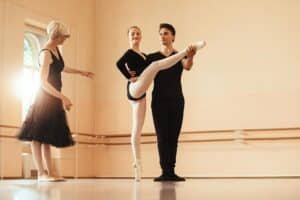
tap dance
Tap dance, often associated with the rhythmic clapping of feet, is a unique and exhilarating art form that blends the technicalities of dance with the infectious energy of music. This dynamic style of dance is not only about movement but also about sound. Dancers create intricate rhythms with their feet, turning the floor into a musical instrument, while their bodies express the emotions and stories behind the beats. Tap dance has evolved over centuries, leaving an indelible mark on the world of performance and becoming one of the most iconic forms of dance. This article will explore the rhythm and artistry of tap dance, its history, techniques, styles, and the role it plays in both entertainment and culture.
Key Takeaways
- Rich History: Tap dance is a fusion of African rhythms, Irish step dancing, and English clog dancing, evolving into a major cultural and entertainment form.
- Intricate Technique: The foundation of tap dance lies in its percussive footwork, with various techniques like shuffles, ball changes, and improvisation.
- Diverse Styles: Tap dance includes several styles such as classical, rhythm, jazz, soft shoe, and contemporary, each with unique characteristics and influences.
- Cultural Impact: Tap dance has significantly impacted popular culture, from Hollywood musicals to viral social media videos.
The Origins and Evolution of Tap Dance
Also Read: Bigg Boss 18: Best Strategies To Win The Game And Stay In The Spotlight
The Roots of Tap Dance
Tap dance has a rich history that traces back to several cultural influences. It is primarily a fusion of African rhythms, Irish step dancing, and English clog dancing. The origins of tap can be linked to the African slaves brought to the United States, who used rhythmic body movements and foot stomping to communicate, celebrate, and express emotions. These dances were initially a form of social connection and survival, incorporating syncopated rhythms and call-and-response patterns.
Also Read: Why Indian Idol Continues To Captivate Audiences After All These Years
The earliest forms of tap were seen in various African American communities, especially during the 18th and 19th centuries, where dances like the “buck and wing” and “juba” became popular. These movements often involved percussive footwork, and it wasn’t long before European influences, particularly Irish step dancing, were integrated into the art form. The rhythmic patterns of Irish jigs and reels blended with African American dances, creating a fusion of styles that would eventually evolve into modern tap dance.
Also Read: The Best Comedy Films To Watch For A Good Laugh
Development Through the 19th Century
Tap dancing gained mainstream popularity in the 19th century, particularly in the United States. In the mid-1800s, during the era of minstrel shows, tap became a significant part of American entertainment. Performers like Thomas “Daddy” Rice and later, Bill “Bojangles” Robinson, helped elevate the art form by adding intricate rhythms and precise footwork to their routines. Robinson’s signature style, characterized by light, rapid foot taps and a smooth, effortless quality, revolutionized tap and set the standard for future generations of dancers.
Also Read: Movement In The Modern World: The Artistry Of Contemporary Dance
As tap continued to evolve, its influence spread into Broadway shows and Hollywood films in the early 20th century. The combination of tap dancing with musical theater and film allowed tap to reach a global audience, cementing its status as both a dance and an entertainment genre. Iconic tap dancers like Fred Astaire and Gene Kelly brought the art form to the silver screen, blending dance with acting and singing in ways never seen before.
Also Read: Top 10 Jazz Dance Moves You Need To Know
The Techniques Behind Tap Dance
The Foundation of Tap Dance
At its core, tap dance is defined by the sounds a dancer creates with their feet. Tap shoes, equipped with metal taps on the toes and heels, allow dancers to produce distinct percussive sounds as they strike the floor. These sounds form the rhythm of the dance, which is typically accompanied by music, but can also exist in silence to highlight the precision and timing of the dancer’s movements.
Tap dance techniques can be divided into several essential elements:
Improvisation: While tap dancing often follows choreographed routines, improvisation is an essential part of the style. Tap dancers frequently engage in “cutting contests,” where they improvise rhythms to challenge one another in a display of skill and creativity. This improvisational nature of tap dance gives it a sense of freedom and individuality that is unique among dance styles.
Basic Steps: The foundation of tap dance is built upon simple steps such as the shuffle, brush, ball change, and tap step. These basic movements allow dancers to create rhythmical patterns that progress into more complex sequences.
Footwork: Footwork is the heart of tap dance. Dancers use a variety of movements, such as tapping the ball of the foot, sliding the heel, or creating syncopated rhythms by rapidly alternating between their feet. The speed and precision with which the dancer executes these footwork patterns determine the complexity and effectiveness of the performance.
Coordination and Timing: Tap dance is not just about moving your feet; it’s about coordinating footwork with the body’s movements and the rhythm of the music. Successful tap dancers must develop impeccable timing and the ability to stay in sync with the beat. Many tap dancers refer to this as “having a good sense of rhythm,” which is the ability to feel and express the beat through their movements.
Tap Terminology: Tap has its own unique vocabulary. For instance, a “flap” is a step where one foot taps on the floor, followed by the other foot brushing the floor and then tapping down. “Buffalo” refers to a leap from one foot to the other, producing a quick rhythmic sound. Learning these terms is essential for mastering tap dance.
Styles of Tap Dance

Tap dance has developed various styles over time, each with its own distinctive characteristics and techniques. Here are some of the most well-known styles:
1. Classical Tap Dance
Classical tap, often referred to as Broadway or Vaudeville tap, focuses on precise footwork, intricate rhythms, and theatrical performance. This style was prominent in early Hollywood musicals, with performers like Fred Astaire and Ginger Rogers exemplifying the elegance and precision of classical tap. Classical tap is typically performed to jazz music and emphasizes choreography that is both visually stunning and rhythmically complex.
2. Rhythm Tap
Rhythm tap emphasizes the percussive and musical aspects of tap dance. It focuses on the clarity of sound and the intricate rhythms produced by the feet, often accompanied by jazz or blues music. Rhythm tap dancers tend to favor improvisation, showcasing their ability to express themselves through spontaneous rhythms. Notable rhythm tap dancers include the legendary Gregory Hines, who helped revive interest in this style in the 1980s.
3. Jazz Tap
Jazz tap is a fusion of traditional tap and jazz dance. It combines the sharp, syncopated rhythms of tap with the fluid, expressive movements of jazz dance. Jazz tap is characterized by its flexibility and its ability to adapt to different genres of music, from swing to funk and beyond. This style is often seen in contemporary dance performances and Broadway shows.
4. Soft Shoe Tap
The soft shoe style of tap dance is a more subtle and elegant form that uses smooth, quiet movements and softer sounds compared to other styles. Dancers perform with a gentle glide and create a subdued percussive sound. Soft shoe tap was popularized by tap greats such as Bill Robinson, who was known for his smooth and effortless style.
5. Contemporary Tap
Contemporary tap merges traditional tap elements with modern dance techniques. This style often incorporates elements from hip-hop, ballet, and contemporary dance, making it a diverse and innovative form. Dancers in this style may perform tap routines to contemporary music genres such as pop, rock, or electronic beats.
Tap Dance in Popular Culture
Tap dance has made its mark not only on stage but also in popular culture, influencing everything from film to television, theater, and even social media. Tap dancers such as Fred Astaire, Gene Kelly, and Sammy Davis Jr. helped elevate the dance form to international stardom in the early 20th century through their performances in Hollywood musicals. These dancers were not only masters of technique but also gifted performers who blended tap with other forms of entertainment like singing and acting.
In the 21st century, tap has experienced a resurgence in popularity. Shows like So You Think You Can Dance and the Tony Award-winning musical Tap Dogs have helped bring tap back into the spotlight. Tap dance is also increasingly being featured in Broadway performances and modern musicals, where its rhythmic qualities enhance the storytelling and emotional depth of the production.
The internet has played a key role in the revival of tap dance. Social media platforms like YouTube have allowed tap dancers to share their performances with a global audience, creating an online community where dancers can learn, collaborate, and be inspired by one another. Tap dancers today often use viral challenges, online tutorials, and collaboration with other genres to keep the art form alive and thriving.
Also Read: Movement In The Modern World: The Artistry Of Contemporary Dance
Conclusion
Tap dance is more than just a form of entertainment; it is a rich, expressive art that combines rhythm, movement, and music into an exciting and dynamic performance. From its African and European roots to its global influence today, tap dance has continuously evolved, reflecting the cultural shifts and social changes of the times. Its history, techniques, and styles are an intricate tapestry of sound and movement, with every tap producing a new and exciting rhythm. Tap dance not only allows performers to express themselves but also to connect with audiences through the universal language of rhythm.
As the art form continues to evolve and thrive, tap remains a vital part of the dance world, blending tradition with innovation, and rhythm with expression. Whether it’s the precision of classical tap or the freedom of rhythm tap, the journey of tap dance is one that will continue to inspire, challenge, and entertain for generations to come.



